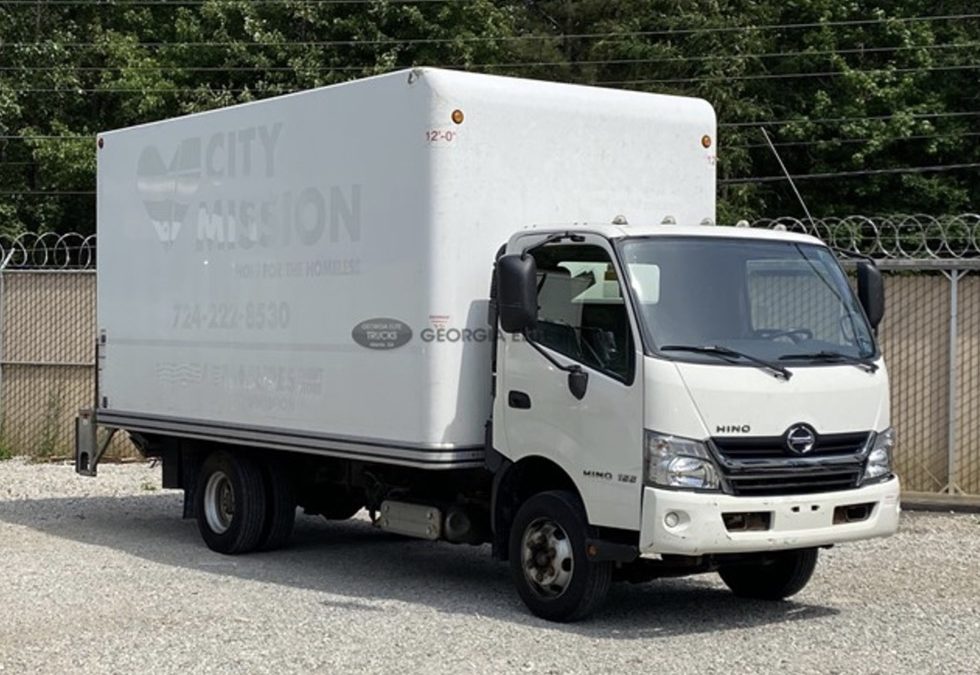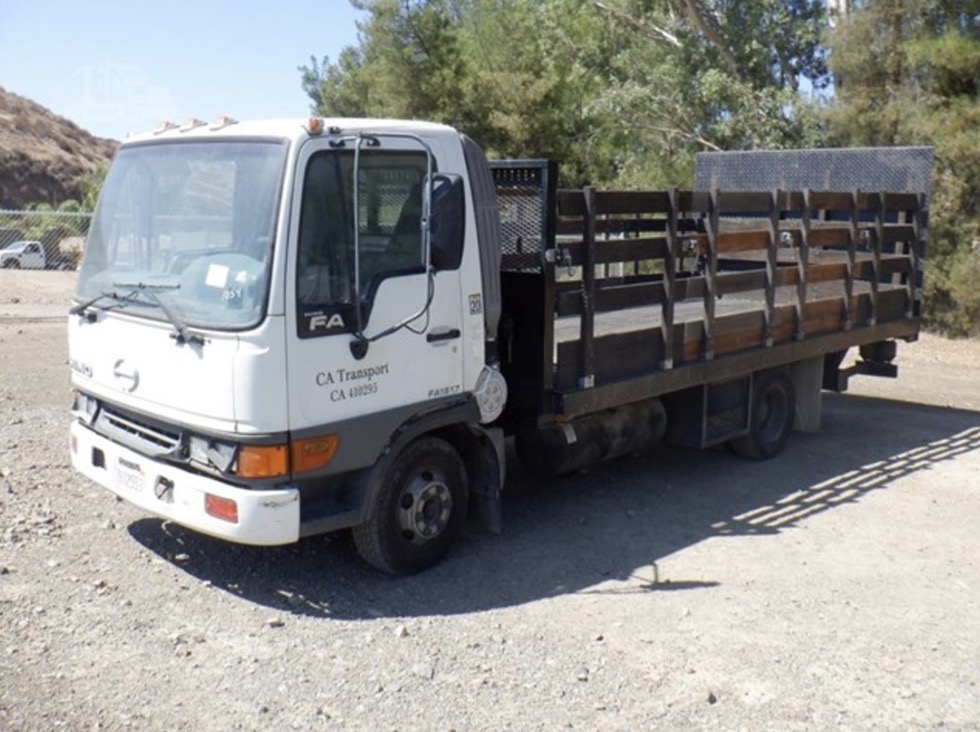Hino Motors LTD, better known as Hino, is a company from Japan that makes commercial trucks worldwide. This blog post will cover the models in North America from the late 1990s to current. Hino is a Toyota subsidiary, and its trucks are more popular outside North America. Hino first started operating in the United States in 1984, and while some trucks are made here in the United States, some are made in Japan as well. You will also find that the same truck we have here in the United States is called a different model name in other countries.
Our data is backed by our Diesel VIN decoder, which decodes millions of VINs yearly. This data is analyzed to re-create the same model years that these trucks manufactured.
Note that model years and the actual year trucks release are often different. Most times, the model year is one year from the manufacturing date. The next model years typically come out in February or March of the previous year. This means a truck built in April 2022 is typically a 2023 model year. The years given here are model years, not the year the truck manufactured.
The other essential item is that we do not include gliders in our year ranges. Gliders are trucks built either without engines or with remanufactured engines. This was a loophole around emission-related truck engines for several years before it was closed by the government, and gliders were no longer allowed.
Hino trucks can break down into several generations, which loosely follow these guidelines:
- First Generation = the Mid 1990s to 2004
- Second Generation = In 2005, a new product lineup added conventional model trucks to the LCFs. Some models made it longer, but this lineup allowed Hino to become more competitive in the market.
- Third Generation = In 2021, Hino launches a new line of conventional & LCF trucks, including their first ever Class 8 truck.
Hino First Generation
These trucks first arrived in the United States in the 1990s. While the prefixes are listed below, they have some suffixes, such as “FA1517”. We have no idea what the suffix means, so if you know, drop us a comment at the bottom of this post.
Hino F-Series & S-Series
The HINO F-Series named after the Toyota FA & BA heavy-duty trucks that Toyota used in the 1950s. These were part of the 1st generation of commercial trucks in the US and used the Hino J05C (FA & FB Series) or J08C (FD & engines. They were imported from Japan and sold in the United States through the model year 2004. The differences are as follows:
- FA Series = Class 4 truck
- FB Series = Class 5 truck
- FD Series = Class 6 truck
- FE Series = Class 6 truck
- SG Series = Class 7 truck
Hino Second Generation
The second generation of Hino Trucks brought new models and their first conventional truck that now dominated the lineup. This happened in 2005 when commercial trucks had to meet new engine EPA requirements. Hino quickly shifted towards manufacturing trucks in North America, opening the California factory in 2006 and then the West Virginia factory in 2010.
Hino 145
The Hino 145 is a Class 4 truck produced from 2005 through 2009. This truck was only built with the Hino J05D engines, which were the J05D-TA and J05D-TF, both of which are 4.7L engines.
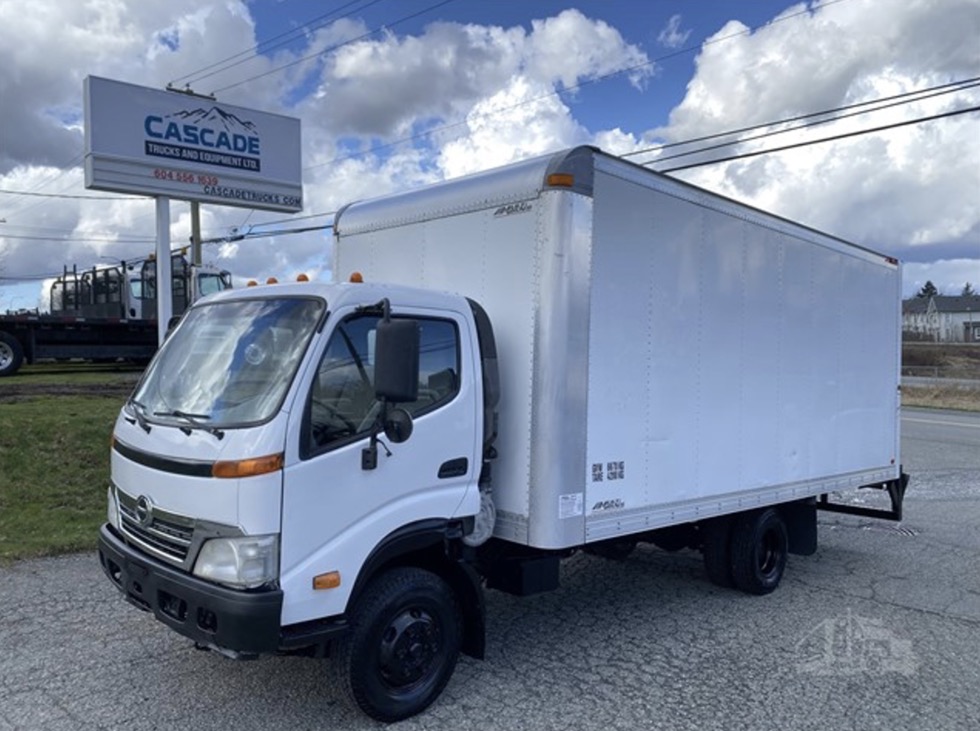
Hino 165
The Hino 165 is a Class 4 truck sold during the same period as the Hino 145, except that the Hino 165 was a conventional model design. The drivetrain took the Hino J05D-TD (when imported from Japan) & J05D-TF (When built in the USA) engines, both of which are in the same family and a 4.7L.
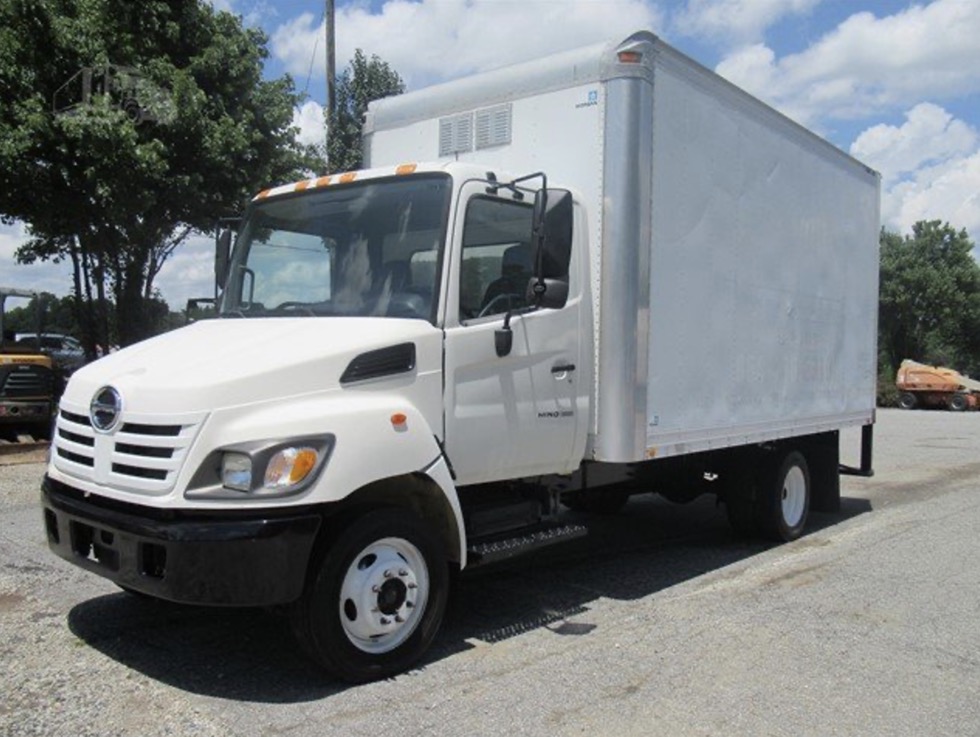
Hino 185
The Hino 185 joins the previous two models, Hino 145 & Hino 165, built during the same era. This is also a conventional model truck that took the J05D-TA (When imported from Japan) or the J05F-TF (when made in the USA). This truck is a Class 5, which means it has a higher available payload. The truck was only available in a 4×2 configuration and came from the factory with three different wheelbase configurations.
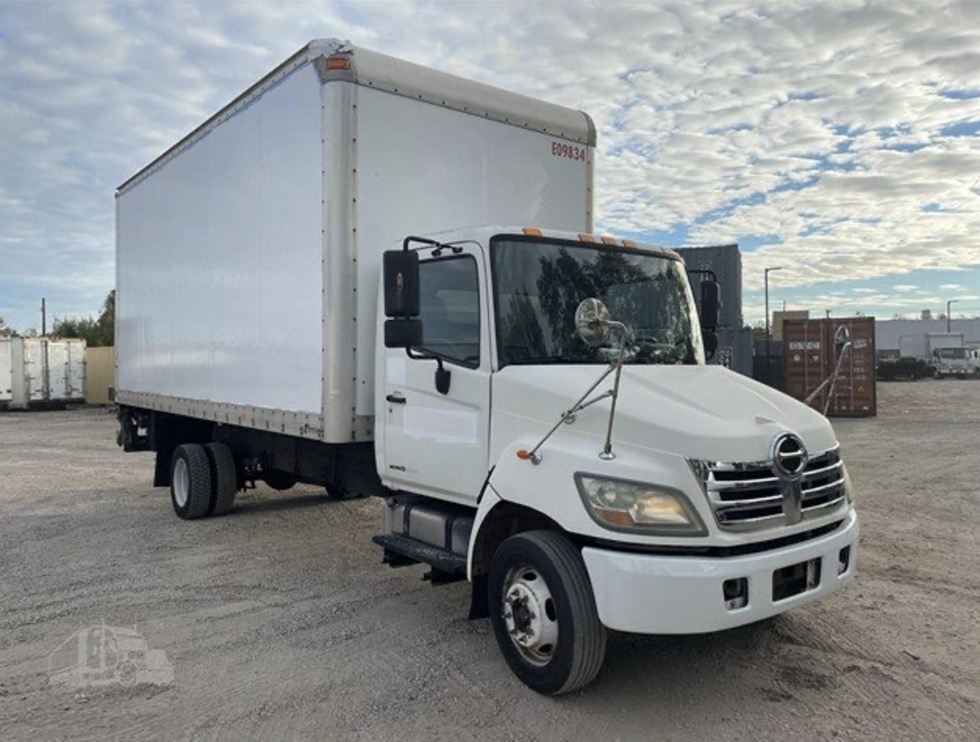
Hino 155
The Hino 155 was produced from 2016 through the model year 2020 as the Class 4 model truck. It used the same engine for its entire lifespan, the Hino J05E-TP 5.1L engine. The truck came with one transmission option: the Aisin A465 6-speed automatic. The Hino 155 looks like its predecessors in the Class 5 segment, with only slight changes to the front grill and bumper compared to those models.
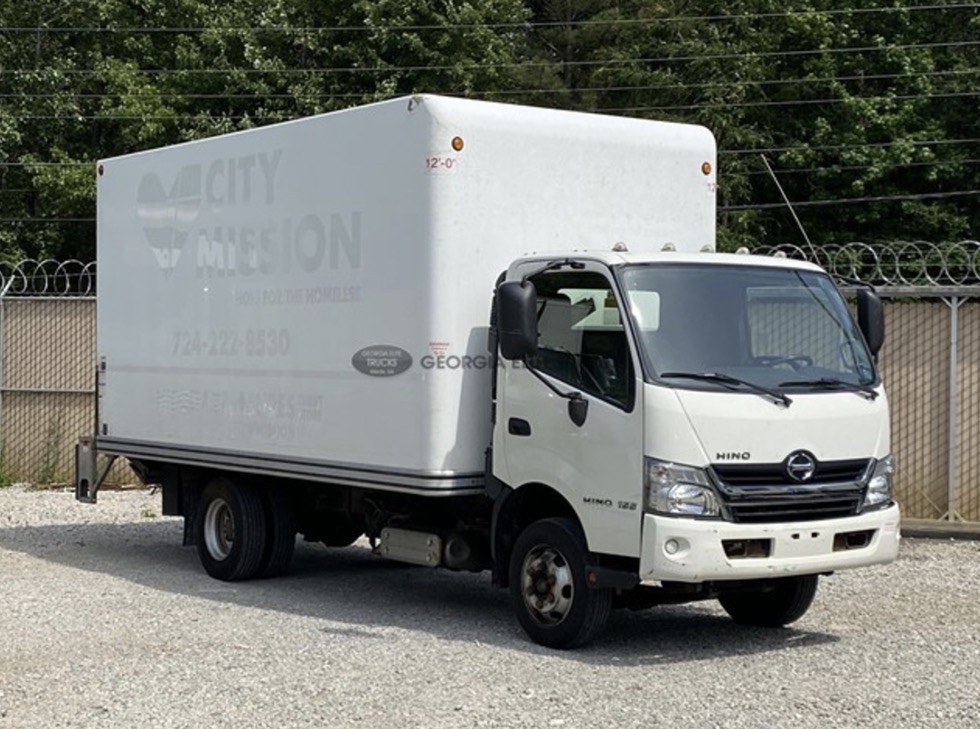
Hino 195
The Hino 195 is a Class 5 low cab over commercial design truck built from 2013 through 2020. It came with the J05E-TP engine, and, like other Hino trucks of the time, it was only available with the Aisin A465 6-speed automatic transmission. All of the Hino trucks in this series used the same cab, as it was the drivetrain, frame, and axle configurations that set them apart for the different GVWRs that trucks came as.
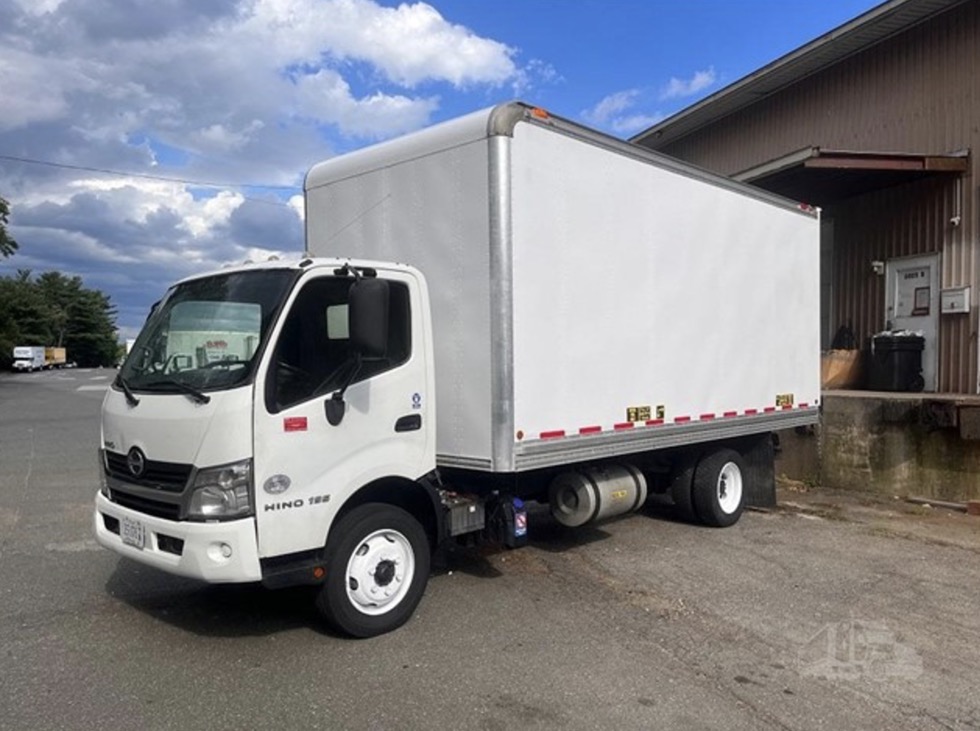
Hino 195H
The “H” in the model stands for hybrid, which is what the Hino 195H is. It came with the J05E-UG that paired up with a 288-volt nickel metal hydride battery. Rated as a Class 5, it manufactured from 2014 through 2020.
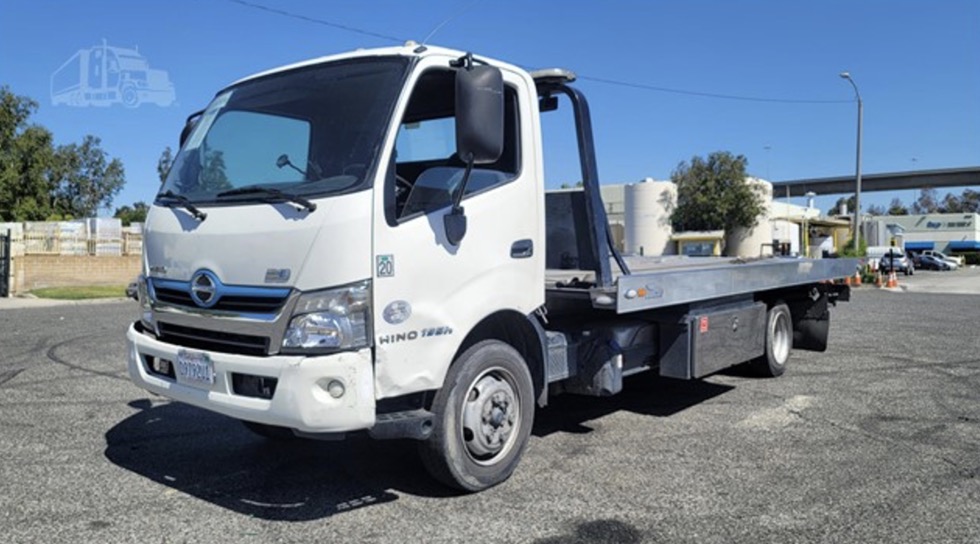
Hino 238
The Hino 238 is the smallest of the conventional model trucks built by Hino from 2005 through 2021. The Hino 238 & Hino 268 are both Class 6 trucks, but the difference is that the GVW of the 268 is 24,950 while the Hino 238 is 23,000. The engine specifications were also slightly different through the years. For example, with the model year 2020, both trucks took versions of the J08E. The difference was that the 268 could upgrade to the J08E-VB, which has 30 more HP and 140 lb-ft of torque. The cab was the same on the Hino 238, 268, & 338.
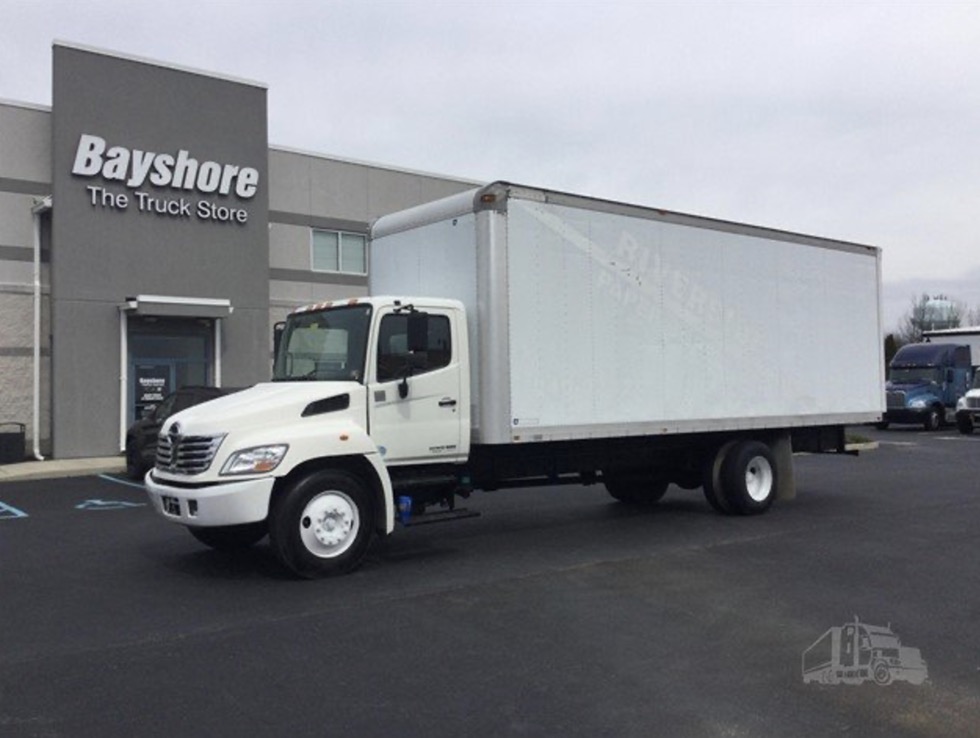
Hino 258LP & Hino 258ALP
The “LP” in Hino 258LP stands for “Low Profile,” with the cab slightly lower to the ground. This truck was also available as a Hino 258ALP, with the extra “A,” meaning air brakes. The Hino 258 series rated at 25,500 lbs for its GVW, so it does have its place in the lineup. The truck always had some version of the Hino J08E engine when it manufactured from 2005 through 2021.
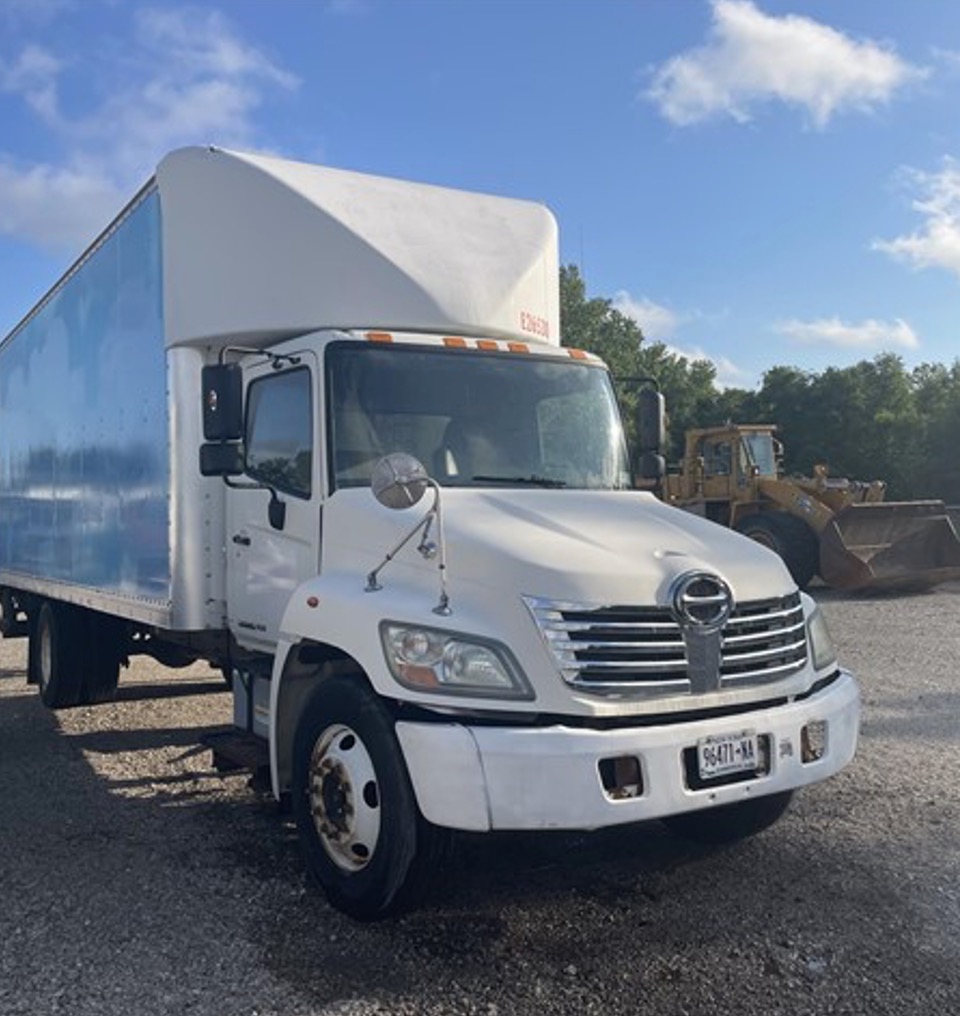
Hino 268 & Hino 268A
The Hino 268 is a conventional model truck built from 2005 through 2021. It released with different versions of the J08E engine through the years – J08E-TA when it imported from Japan, then the J08E-TV when it manufactured in the United States, and then the J08E-WU became standard, and the J08E-VB became an optional upgrade. In all cases, this is a 7.6L diesel engine, and it was paired up with the Allison 6-speed automatic with versions of the 2200HS, 2200RDS, or 2500RDS available.
The Hino 268A is a variation of the Hino 268, with the “A,” meaning the truck had air brakes instead of hydraulic.
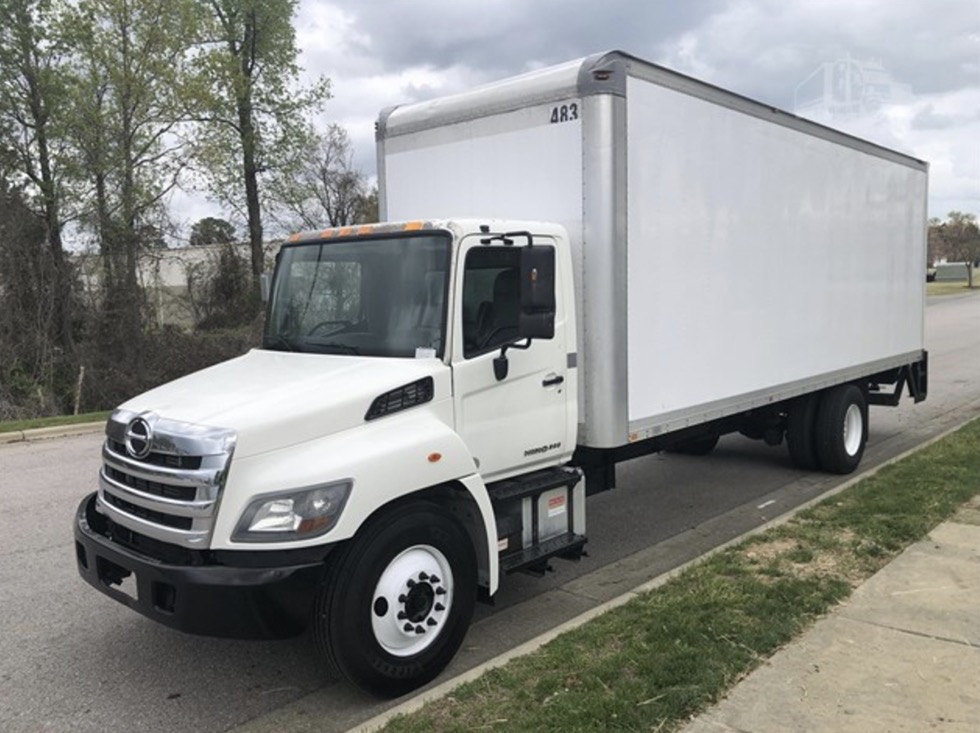
Hino 308
This is a peculiar model. Of the millions of VINs we have decoded, we only have 12 that have been a Hino 308. We cannot find any information on Hino’s website, nor anything of much substance besides a mention of it on TruckNews.com and a video of one with a refuse setup on YouTube. We know that the ones that decoded have the Hino J08E 7.6L engine, and all of them are Class 7 trucks.
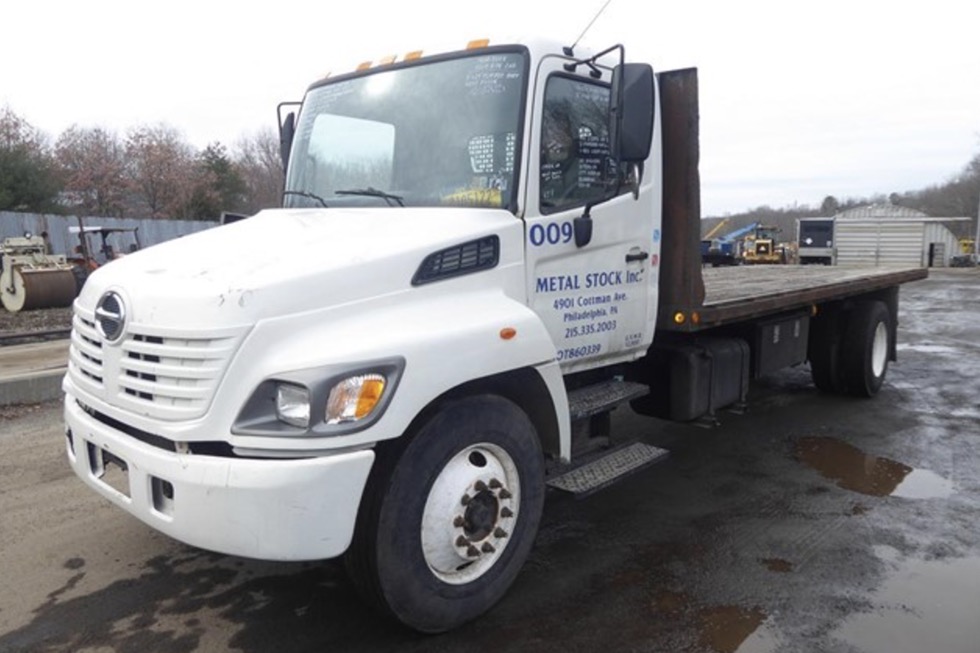
Hino 338
The Hino 338 is the Class 7 version of the Hino 268. This truck was built with the same various J08E engines but could handle heavier axles and suspensions to get to the Class 7 version. The cab is the same as the smaller version, and the transmission options are the same.
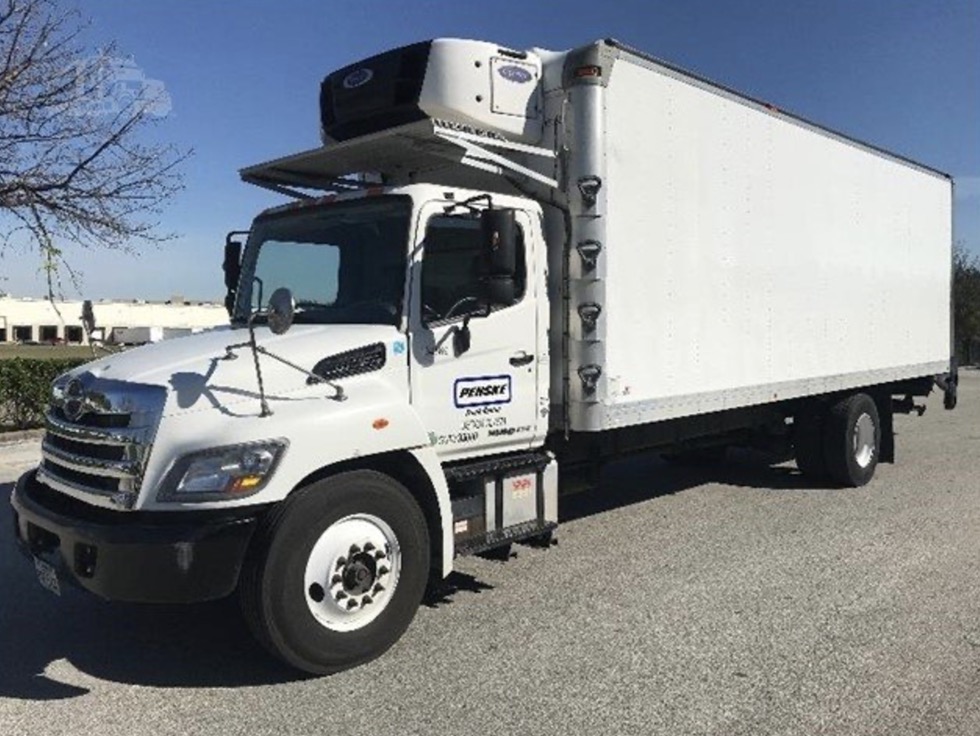
Hino Third Generation
Starting with the model year 2020, the latest generation of Hino Trucks has arrived. The new series also includes the XL8, Hino’s first Class 8 truck in North America. Hino is looking towards the future with the XL8, designed as a hydrogen fuel cell electric truck. While you can’t order these trucks with the millions of options other truck manufacturers offer, Hino is well known for its attention to detail and high quality. This 3rd generation of Hino trucks also includes the new medium-duty line, the L Series.
Hino XL7
The Hino XL7 is the newest Class 7 truck in the Hino lineup, which replaces the old models. The truck is available with a Cummins L9 and can have a GVWR of 33,000. Like its big brother, the XL8, the Hino XL7 can be purchased as a day, extended, or crew cab. The XL7 is larger than the L7 so you can have it in a 6×4 configuration with larger engine sizes.
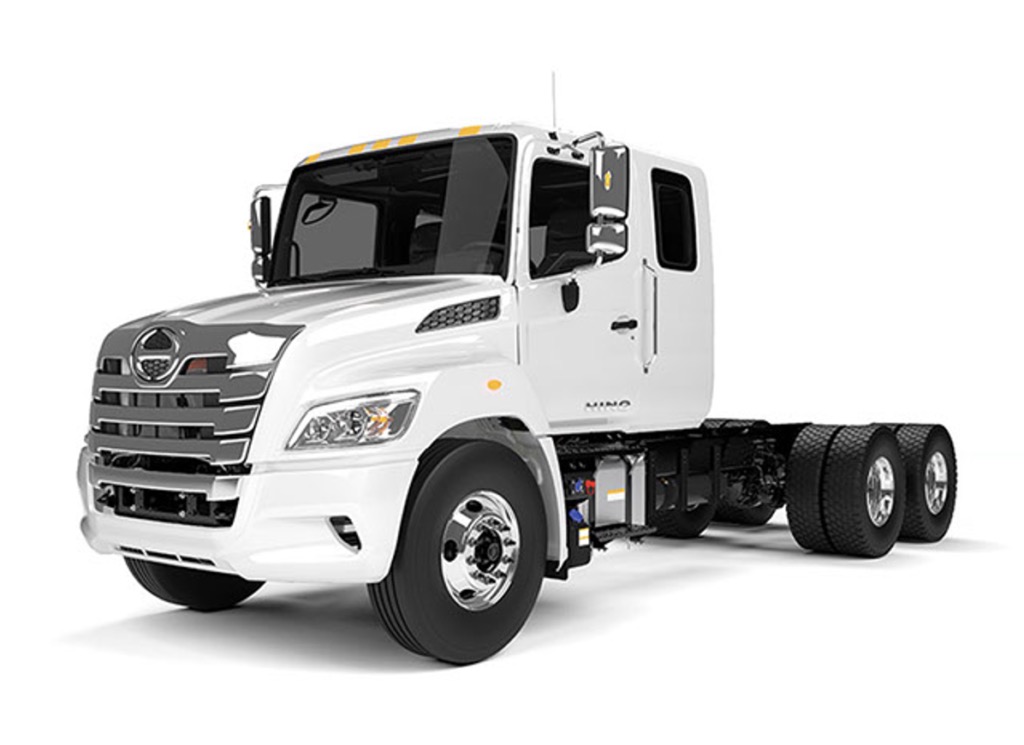
Hino XL8
With both trucks using the same cab, the XL8 is the Class 8 truck—the Cummins L9 powers both with different horsepower options. Hino XL-series trucks are only available with Allison automatic transmissions and three different cab configurations (Day Cab, Extended Cab, & Crew Cab).
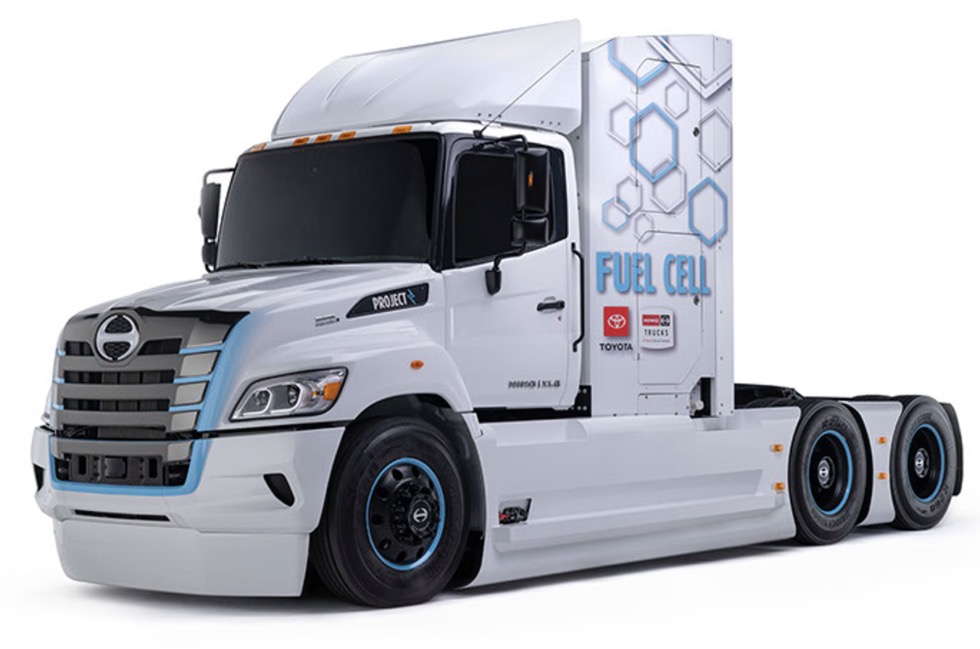
Hino L6
The Hino L6 is the Class 6 truck with a GVWR range of 23,000 to 25,950 lbs. It is available with the Cummins B6.7 rated at 240 or 260 HP. The Hino L6 can have smaller transmissions than the L7, such as the Allison 2200HS, 2200RD, 2500HS, or 2500RDS. This truck also offers three different cab configurations of day cab, extended cab, and crew cab.
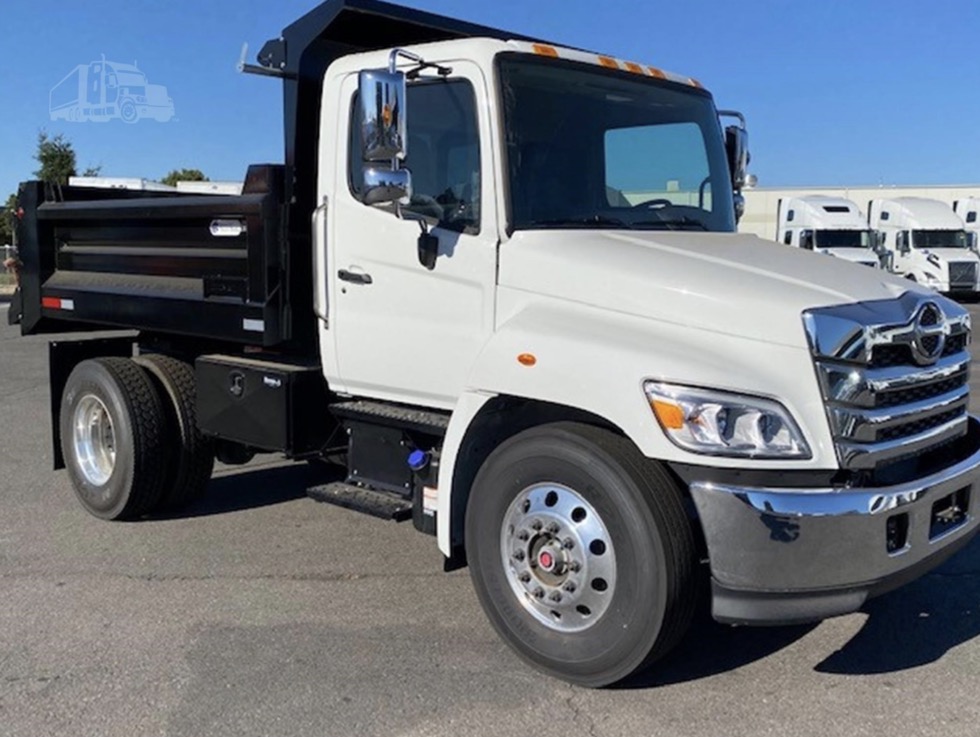
Hino L7
The Hino L7 sits slightly smaller than the XL7 and is only available with the Cummins B6.7 engine. It has more rugged transmissions available from Allison, which are the 2500RD, 2500HS, 3000RDS, and 3500RDS. With all trucks in this generation, you’ll see them driving down the road as a day, extended, or crew cab. This truck is only available as a single-drive axle in the 4×2 configuration.
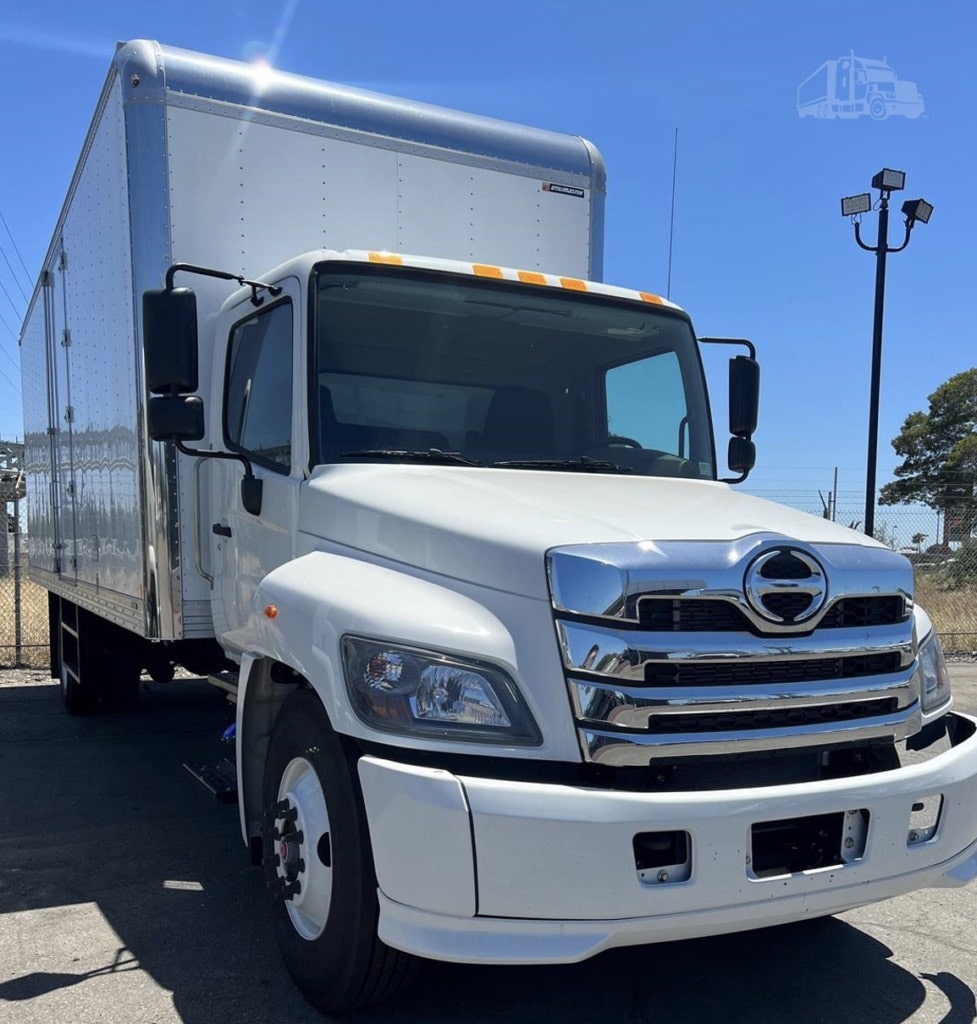
Hino M4
Although the Hino website doesn’t list the new M-Series, they are coming. The Hino M4 is the latest Class 4 LCF truck on the market, and upgrades include a new grill design, optional LED headlights, and the latest Aisin 6-speed automatic transmissions. This is the industry’s first fully integrated lane departure warning system for trucks in this class, which is typical of Hino leading the charge on safety and quality.
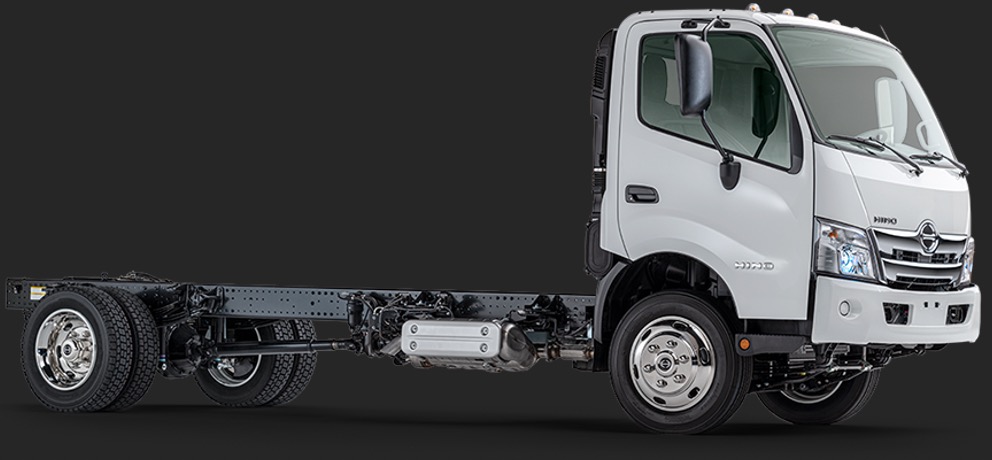
Hino M5
The same cab as the M4, the Hino M5 is the bigger brother offering more significant driveline components to meet the Class 5 requirements. The J05E engine powers both trucks and has the crew cab option available. Both the Hino M4 & M5 delayed getting to market due to Hino having trouble meeting EPA requirements on the J05E, J08E, and A90C model engines, but it seems to have figured it out and has re-started the factory after taking almost one year pause.
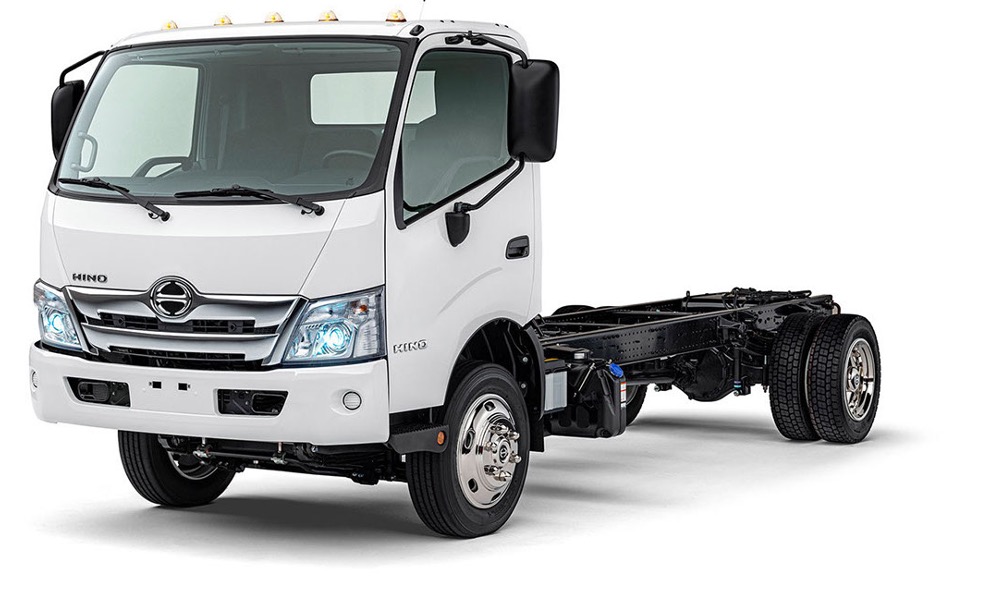
Summary
We love hearing our customer’s stories and thoughts about the various Hino Truck models produced in the last 30 years, so make sure to leave a comment!
Diesel Laptops offer a vast range of diagnostic tools, repair information, parts information, and training classes to help you quickly and efficiently diagnose and repair all of the Hino Truck models we have listed. Let us see how we can help you save both time and money!
| Model | Year Started | Year Ended | Weight Class | Style |
| FA Series | 1990s | 2004 | Class 4 | LCF |
| FB Series | 1990s | 2004 | Class 5 | LCF |
| FD Series | 1990s | 2004 | Class 6 | LCF |
| FE Series | 1990s | 2004 | Class 6 | LCF |
| SG Series | 1990s | 2004 | Class 7 | LCF |
| 145 | 2005 | 2010 | Class 4 | LCF |
| 165 | 2005 | 2010 | Class 4 | Conventional |
| 185 | 2005 | 2010 | Class 5 | Conventional |
| 238 | 2005 | 2021 | Class 6 | Conventional |
| 258AL & 258LP | 2005 | 2021 | Class 6 | Conventional |
| 268 | 2005 | 2021 | Class 6 | Conventional |
| 268A | 2006 | 2021 | Class 6 | Conventional |
| 308 | 2005 | 2018 | Class 7 | Conventional |
| 338 | 2005 | 2021 | Class 7 | Conventional |
| 155 | 2016 | 2020 | Class 4 | LCF |
| 195 | 2013 | 2020 | Class 5 | LCF |
| 195H | 2014 | 2020 | Class 5 | LCF |
| XL7 | 2022 | Current | Class 7 | Conventional |
| XL8 | 2022 | Current | Class 8 | Conventional |
| L6 | 2022 | Current | Class 6 | Conventional |
| L7 | 2022 | Current | Class 7 | Conventional |
| M4 | 2023 | Current | Class 4 | LCF |
| M5 | 2023 | Current | Class 5 | LCF |
Learn more about our repair information database and get access to all the repair information you need to perform quality repairs on Hino trucks and more! Schedule a demo today and get access to a FREE 30-Day Trial of our Diesel Repair Pro Plan!

